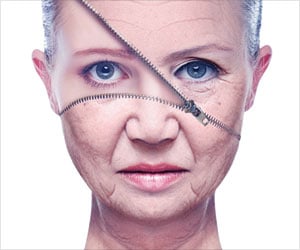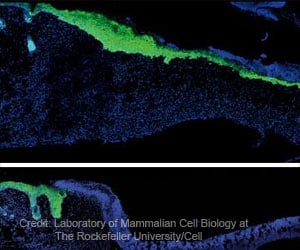- Scientists uncover a critical step in the molecular process of aging to repair the damaged DNA.
- New revolutionary drug is capable of allowing the cells to improve DNA repair and reverse aging.
- The drug is found to benefit survivors of childhood cancers and also help NASA astronauts from cosmic radiation.
The cells in our body have an innate capability to repair the DNA damage. However, the ability to repair may decline as we age.
By treating the mice with the NAD+ precursor, or ‘ booster;’ called NMN (Nicotinamide mononucleotide), the ability of the cells, to repair the DNA damage caused by radiation exposure or old age, improved.
Professor David Sinclair, UNSW School of Medical Sciences and Harvard Medical School Boston, said, "The cells of the old mice were indistinguishable from the young mice, after just one week of treatment."
The clinical trials of NMN Therapy will begin within six months.
On the Verge of Discovering an Anti-aging Pill: NMN Therapy
Professor Sinclair and Dr. Wu have been working for the past four years, to make the NMN therapy into a drug substance or a pill for anti-aging.Study Findings
The study findings on NAD+ and NMN were found to add value to the aging research. The research team looked at the interplay of the number of proteins and molecules involved in the aging process.They also established the role of NAD+ in treating various diseases of aging, female infertility and side effects of chemotherapy.
Professor Sinclair, found a link between the anti-aging enzyme SIRT1 and resveratrol which is a naturally occurring molecule present in red wine, in 2003.
He added, "While resveratrol activates SIRT1 alone, NAD+ boosters activate all seven sirtuins, SIRT1-7, and should have an even greater impact on health and longevity."
Benefits of NMN Therapy
The theory may alleviate the damage caused by the DNA in frequent flyers and may also benefit survivors of childhood cancer.Around 96% of childhood cancer survivors would suffer from chronic illness by age 45, this may type 2 diabetes, Alzheimer’s disease ,other types of cancer and cardiovascular diseases.
Dr.Wu said, "All of this adds up to the fact they have accelerated aging, which is devastating."
"It would be great to do something about that, and we believe we can with this molecule."
Why is NASA Excited?
The National Aeronautics and Space Administration (NASA) is an independent agency of the United States of America and is well known for its aerospace research.The research work on NMN therapy has excited NASA because of the challenge it faces to keep astronauts safe and healthy during a four-year mission to Mars.
NASA astronauts, even on a short mission, may experience an accelerated aging from cosmic radiation.
They may suffer from symptoms like
- Muscle weakness
- Memory loss when they return from space
- 5% cell death
- 100% chance for cancer
Cosmic Rays
Cosmic rays are subatomic particles that arrive with a variety of energies from outside the Earth’s atmosphere. The radiation emitted is not only an issue for astronauts, but also for people during air travel. It is roughly estimated that the London-Singapore-Melbourne flight may emit cosmic rays equivalent to a radiation of a chest X-ray.References:
- Jun Li, Michael S. Bonkowski, Sébastien Moniot, Dapeng Zhang, Basil P. Hubbard, Alvin J. Y. Ling, Luis A. Rajman, Bo Qin, Zhenkun Lou, Vera Gorbunova, L. Aravind, Clemens Steegborn, David A. Sinclair. A conserved NAD binding pocket that regulates protein-protein interactions during aging. Science, 24 Mar (2017): Vol. 355, Issue 6331, pp. 1312-1317 DOI: 10.1126/science.aad8242
- What are Cosmic Rays? - (http://www.telescopearray.org/index.php/about/what-are-cosmic-rays)
Source-Medindia










